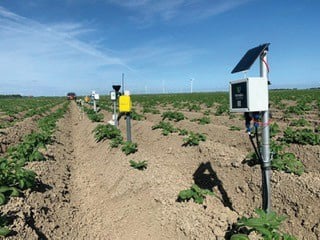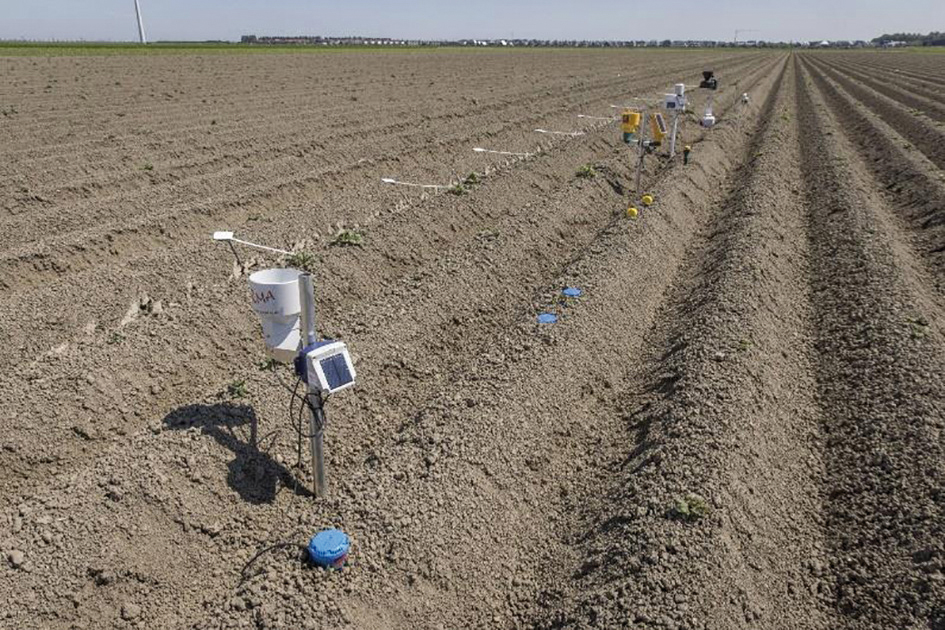
Precision agriculture (PA) is a farming management concept based on observing, measuring and responding to inter and intra-field variability in crops. It is a basis for more sustainable farming and highly depending on integration of technologies and knowledge. This column focusses on precision water management on an innovative arable farm.
A new product coming from fresh water farming? Not yet, it is the name of an on farm research project in which a seed potato farmer drastically changes the water management of his farm. The approach relies on smart use of several technologies and know how, plus the view of the farmer involved.
The 40 hectare farm with a light clay soil is located in the north of the Netherlands, having a temperate sea climate and growing e.g. seed potatoes, wheat and onion. On annual basis there is enough, but during the growth season the precipitation is insufficient to sustain high crop production. Climate change, with expected warmer and dryer summers, and more unpredictable extreme rain events, will water shortage and excess water more and more in the future. Additionally, the farmer faces problems with salinization of his soil. Salty seepage water from deep soil layers infiltrates the rooting zone of his crops more and more because of current water management, harming production. These are the drivers for the farmer to change his water management.
The farm combines a tailored, high density sub soil irrigation system with drip irrigation, soil sensors, models for monitoring and prediction of water availability in the rooting zone and for irrigation advice, and a rain water collection and storage system. A shift was made from planting in 75 cm wide rows to planting in 183 m beds. The drainage pipes at 1 m depth allow to bring water from the storage system into the field in times of water shortage, and to pump excess water into the storage system when there is too much water in the soil. For the farm it is important to keep the storage water apart from surface water because of brown rot regulations (no irrigation allowed with surface water on fields where seed potatoes are grown). See references 1 – 3 for details.
All technologies mentioned have now been implemented on the farm in 2022. In the coming years, we will see if all technologies plus investments will lead to more sustainable production, less water use and less damage from salinization. First results look promising, e.g. the salinity level of surface water is already lower than in previous years because seepage water is suppressed by sub irrigation. Next step is to get the best value for money decision support for sub soil and drip irrigation advice from soil moisture sensor advisory systems. In 2021, we evaluated some 10 systems (see Figure) on e.g. accuracy, costs, robustness and user friendliness. All systems scored reasonably well, but there were large differences on specific scores (see reference 4). The study is repeated in 2022, with also an experiment on the fresh water farm. Fresh water farming may become a new product when the farmer gets rewarded for the societal service he delivers. It contributes to climate change mitigation. A reward is then in place.

Figure: Validation of soil moisture sensors on a clay soil in 2021.
Dr. Ir. Corné Kempenaar (WUR & Aeres)
The content of this blog originates from the World of Potato Research column published in PotatoWorld magazine 2022/03.
References
Instrumenten watermanagement
NPPL On Tour bij akkerbouwer Klaas Schenk
Zoetwaterboeren
Vergelijkingsproef bodemvochtsensoren
Want to keep reading about the potato crop?
Our Potato handbook is a global potato university in 1 book!
Buy your copy today and get a one-year free subscription to PotatoWorld magazine.

